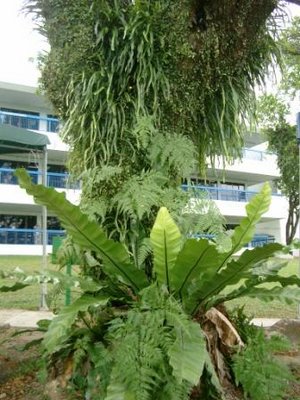Are Ferns Poisonous?

Poisonous plants have always been part of daily life. In the nineteenth century, poisonings due to plants reached near-epidemic levels as people often foraged for sources of food from natural plantings. Today, potentially dangerous plants can still be found all around us. Poisonous plants are frequently part of interiorscapes in homes as well as in landscape plantings outdoors. This has become increasingly problematic as more and more cultivated, exotic plants from throughout the world are introduced into the landscape. Recent studies have estimated that 3.5% of all poisonings in the United States are due to plants.
All types of native and introduced plants can be poisonous including ferns, herbaceous plants, woody shrubs, and trees. Identifying plants that are poisonous is difficult since poisonous plants do not appear distinctly different from their nontoxic relatives or counterparts. Many poisonous plants have such unpleasant tastes that most adults don’t chew them for very long before spitting them out. However, some poisonous plants are not distasteful and can even be sweet and, if eaten in large quantity, can cause serious problems. An example is the fruit of deadly nightshade, Solanum dulcamara; the red berry is not only attractive but also tastes sweet. The situation of plant poisoning of children is quite different than with adults since children have great curiosity and will often chew on anything within their reach, especially attractive berries or fruit. Children are also less likely than adults to spit out unpleasant-tasting substances. Since much smaller quantities are necessary to produce a toxic reaction in children, the risks of poisoning due to ingestion are much greater than for adults. However, regardless of age, reactions to poisonous plants vary with the individual and can be influenced by diet, metabolism, and medications being taken.
The term "poisonous" designates many kinds of reactions or effects. Among the key effects are allergic reactions (caused by spores, pollen, or naturally occurring volatile compounds emitted into the air by plants), skin rashes or dermatitis (caused by direct or indirect contact with allergenic or irritant compounds), skin photosensitization (caused by exposure to irritating or allergenic compounds), and internal poisonings or irritations (from ingestion of plants or plant parts). The general types of poisoning and examples of plants responsible for each are: blood poisoning (wild cherry, Prunus spp.), nerve poisoning (mushrooms), cardiac poisoning (foxglove, Digitalis purpurea), and skin irritation (poison ivy, Toxicodendron radicans).







0 Comments:
Post a Comment
<< Home